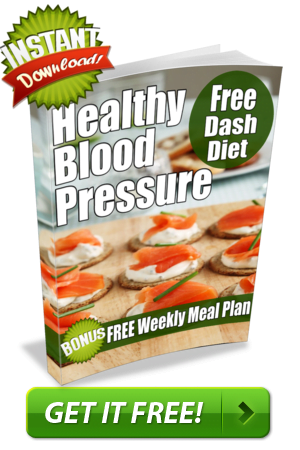The DASH diet, or Dietary Approaches to Stop Hypertension, is a dietary pattern that is rich in fruits, vegetables, whole grains, and low-fat dairy products, and is low in saturated and total fat. It is designed to lower blood pressure and improve cardiovascular health, but it may also be effective in lowering cholesterol levels.
Here is a guide on how to use the DASH diet to lower cholesterol:
Follow the DASH eating plan:
The DASH eating plan recommends eating a variety of foods from different food groups in the right amounts.
- Fruits: Aim for 4-5 servings per day. Choose a variety of fresh, frozen, or canned fruit, and try to include at least one serving of citrus fruit, such as oranges or grapefruits.
- Vegetables: Aim for 4-5 servings per day. Choose a variety of fresh, frozen, or canned vegetables, and try to include at least one serving of leafy greens, such as spinach or kale.
- Grains: Aim for 6-8 servings per day, with at least half of these servings coming from whole grains, such as whole wheat, quinoa, or brown rice.
- Dairy: Aim for 2-3 servings per day of low-fat or fat-free dairy products, such as milk, yogurt, or cheese.
- Lean proteins: Aim for 2 or fewer servings per day of lean proteins, such as poultry, fish, or legumes.
- Fats and oils: Aim for 2-3 servings per day of unsaturated fats, such as olive oil, avocado, or nuts. Limit intake of saturated fats, such as butter or red meat, to less than 6% of total calories.
Eat less salt:
The DASH diet recommends limiting sodium intake to less than 2,300 mg per day, or less than 1,500 mg per day for people with high blood pressure or other risk factors. To reduce your salt intake, choose fresh or frozen foods over canned or processed foods, and use herbs, spices, and citrus juices to add flavor to your meals.
Exercise regularly:
In addition to following the DASH diet, it is important to get regular physical activity to help lower cholesterol levels. Aim for at least 30 minutes of moderate-intensity activity, such as brisk walking, on most days of the week.
Here is a list of foods that are included in the DASH diet and have been shown to be effective in lowering cholesterol levels:
- Oats and oatmeal: Oats and oatmeal are rich in soluble fiber, which has been shown to lower LDL (“bad”) cholesterol levels.
- Nuts and seeds: Nuts and seeds, such as almonds, walnuts, and flaxseeds, are rich in monounsaturated fats and polyunsaturated fats, which can help lower LDL cholesterol levels.
- Legumes: Legumes, such as beans, lentils, and chickpeas, are high in soluble fiber and protein, which can help lower LDL cholesterol levels.
- Fruits and vegetables: Fruits and vegetables, especially those that are high in soluble fiber, such as apples, oranges, and carrots, can help lower LDL cholesterol levels.
- Fatty fish: Fatty fish, such as salmon, mackerel, and sardines, are rich in omega-3 fatty acids, which can help lower LDL cholesterol levels.
- Plant-based proteins: Plant-based proteins, such as tofu and tempeh, are low in saturated fat and can help lower LDL cholesterol levels.
- Olive oil: Olive oil is a monounsaturated fat that has been shown to lower LDL cholesterol levels.
Here are some ideas for incorporating the DASH diet foods that are proven to lower cholesterol into your daily routine:
- Start your day with oatmeal: Oats and oatmeal are a great way to start your day. Try adding fresh or dried fruit, nuts, and a sprinkle of cinnamon to your oatmeal for a tasty and healthy breakfast.
- Add nuts and seeds to your meals: Nuts and seeds can be added to a variety of dishes to add flavor and texture. Try adding a handful of nuts to your morning smoothie, or sprinkling seeds over your salads and grain bowls.
- Incorporate legumes into your meals: Legumes are a great source of protein and fiber. Try adding them to soups, stews, or chili, or using them as a base for veggie burgers.
- Make fruit and vegetables a central part of your meals: Fruits and vegetables should make up a large portion of your diet. Try adding them to your breakfast smoothies, packing them as snacks, and making them the main component of your meals.
- Choose fatty fish for at least two meals per week: Fatty fish is a great source of omega-3 fatty acids. Try adding it to salads, grain bowls, or incorporating it into your main dishes.
- Experiment with plant-based proteins: Plant-based proteins, such as tofu and tempeh, can be a tasty and healthy alternative to animal proteins. Try using them in stir-fries, curries, or as a base for veggie burgers.
- Use olive oil as your primary cooking oil: Olive oil is a healthy and flavorful choice for cooking. Try using it to sauté vegetables, or drizzle it over salads and grain bowls.
By incorporating these foods into your daily routine, you can help lower your cholesterol levels and improve your overall health.
In conclusion, the DASH diet is a healthy eating pattern that can be effective in lowering cholesterol levels. By following the DASH eating plan, eating less salt, and getting regular physical activity, you can improve your cardiovascular health and reduce your risk of heart disease.
If you are interested in trying the DASH diet, you can get our free DASH diet guide by visiting our website or contacting us directly. Our guide includes information on the DASH eating plan, as well as tips and recipes to help you get started. Don’t hesitate to reach out for support and guidance as you work to lower your cholesterol levels and improve your overall health.
